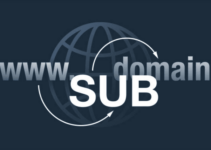In this article, we’ll show you how to get started teaching online for beginners. In the last several years, the online education market has exploded and transformed the traditional approach to learning new skills.
The economy of creators has risen as a result of online learning, which allows anyone to sell their skills and earn more money.
It becomes increasingly difficult to succeed and stand out when entry barriers are so low or non-existent.
As a result, creators will need to reintroduce a new way of sharing their knowledge and experience.
- Increase your prices: If you charge your consumers a lot of money, you’ll get a lot more of them. You must, however, keep in mind that you are making up for the increased price. You may need to hunt for customers who can afford to spend more.
- Increase productivity by hiring more people: It’s the next best thing to being able to clone yourself. To save time, you may employ extra coaches to deliver your programs on your behalf, and just check in with your students and trainers as needed.
- Use leverage to your advantage: Leverage can completely eliminate the need to trade time for money. Online classes may be advantageous in this instance. You can sell an online course on a global scale several times once you’ve built it.
Table of Contents
How to Get Started Teaching Online
2. Create Online Course Content
After you’ve examined your content, it’s time to put your full curriculum online.
When it comes to launching an internet business, there are various challenges to face. Let’s have a look at some of the things you can do to ensure that your online journey goes as well as possible:
Examine your target market once more
After completing the assessment, did any of your preexisting notions change? Take some time to analyze the features of your target client once again; now is the time to be precise. Make a list of their personality characteristics, knowledge level, and previous experiences.
Bring about a change
Your goal is to find out what will happen to your visitors once they complete your online course.
One of the most common blunders made by trainers at this time is attempting to cram everything they know into a single lecture. This frequently leads to student dissatisfaction and decreased course completion rates.
Make a rough outline
Always keep the consumer prospect in mind. Make your curriculum so that your students know what to do next. You could, for example, give a summary of each chapter.
Engaging
Keep your audience interested in what you’re saying. Create your own distinct style and area of expertise. Videos, webinars, audio, and ebooks will all attract students’ attention.
Maintain a contact point with students and make yourself available to them at all times. Make a community and a discussion board for yourself.
Quick Links:





